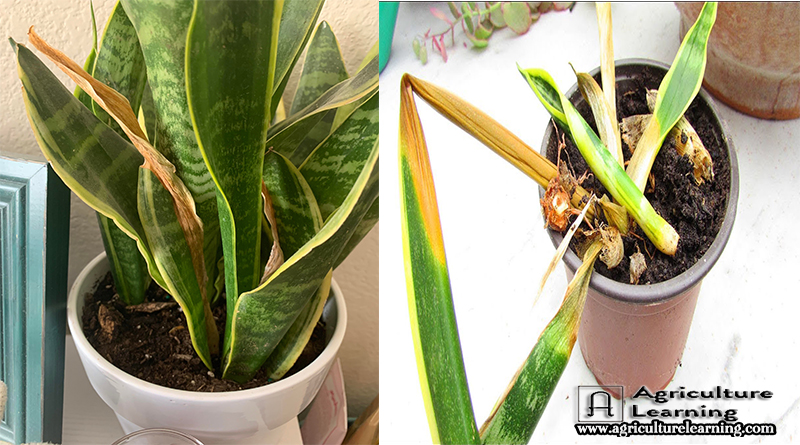The smart Trick of Snake Plant Leaves Turning Yellow That Nobody is Talking About
Wiki Article
Our Snake Plant Leaves Turning Yellow PDFs
Table of ContentsSnake Plant Leaves Turning Yellow Fundamentals ExplainedThe Main Principles Of Snake Plant Leaves Turning Yellow The 5-Second Trick For Snake Plant Leaves Turning YellowThe smart Trick of Snake Plant Leaves Turning Yellow That Nobody is Talking AboutNot known Facts About Snake Plant Leaves Turning YellowGetting My Snake Plant Leaves Turning Yellow To Work
Below are 7 reasons your serpent plant's fallen leaves might be turning yellow and just how to repair it. A number of different plant problems can create yellow fallen leaves, or chlorosis. Chlorosis happens when plants don't have the micronutrients they need to generate chlorophyll, that makes foliage eco-friendly and permits plants to convert sunlight right into food.Snake plants are dry spell forgiving thanks to their succulent leaves (Snake Plant Leaves Turning Yellow). These plants expand finest in loose, well-drained dirt that's enabled to dry entirely between waterings and might just need water as soon as monthly during winter months. Overwatering can protect against origins from soaking up moisture and nutrients that the plant needs and can even cause origin rot
A potbound plant can not absorb nutrients from the dirt. If your snake plant is chock-full or outgrowing its pot, this might be the cause of yellow fallen leaves.
Some Ideas on Snake Plant Leaves Turning Yellow You Need To Know

If the leaves on your serpent plant are obtaining soft, it's usually an indication of excessive water. Serpent plants store water in their leaves and if they're overwatered, the fallen leaves can become soft and mushy. If you believe your serpent plant is being overwatered, allow the soil to dry entirely before watering once again.
Yes, some yellowing is normal and to be expected on older fallen leaves, particularly as serpent plants age. If the plant is otherwise healthy and balanced and the leaves are just lightly yellowed then there is no reason for issue. Nonetheless, if the fallen leaves are dramatically yellowed or if there are other indications of distress after that it's best to take action.
What Does Snake Plant Leaves Turning Yellow Mean?

This can differ relying on the dimension of the pot, the kind of potting mix, and the temperature level and humidity levels. Generally, serpent plants must be watered every one to 2 weeks. Throughout the cold weather, you can reduce watering to once a month. If you think your serpent plant has actually been overwatered, the primary step is to quit sprinkling it.
With a little investigation, you need to have the ability to figure out the reason and take actions to take care of the issue and have a healthy serpent plant. - Snake Plant Leaves Turning Yellow
Snake Plant Leaves Turning Yellow - Truths
The serpent plant is a great houseplant. The snake plant is one of those Visit This Link plants that are wonderful for growing inside in a terrarium, Snake plants can expand fairly big, yet they also tend to be quite low-maintenance.When the soil is overwatered, the plant cells soak up even more water than they can store. Sagging serpent plant leaves are created by soaked-up leaf cells shedding their firmness.
It is, consequently, more probable that your plant will certainly spot yellow spots on its fallen leaves if you overfeed it with plant food during winter. The leaves of serpent plants are also prone to yellowing when overfed, specifically if the origins are fragile. Repotting your yellowing, watering only when the soil dries out, and offering ideal temperature level and light problems can conserve it.
What Does Snake Plant Leaves Turning Yellow Mean?
To stop yellowing triggered by overwatering, quit watering the snake plant until the soil totally dries out. Do not water greater than when a week. Water your serpent plant just when the leading two inches of dirt really feel completely dry. While waiting for the water to drainpipe, water your snake plant early in the morning if your dirt is slow-draining.Your can be removed by removing the yellow ideas. The pruned fallen leaves must grow longer if they are sprinkled correctly and have optimal light and temperature level problems. It is essential to keep in mind that the pointed pointers will not regrow, creating them to stand apart from the remainder of the fallen leaves.
It will not take wish for the fallen leaves to grow back and grow like the healthy and balanced leaves around them. At the same time, you can remove affected fallen leaves from the base of the plant. Recommended Site The indicates that it's obtaining too much or insufficient light or nutrients. The essential message is to allow the snake plant time to recover.
Snake Plant Leaves Turning Yellow Can Be Fun For Anyone
Scroll the article till the end to discover the option. Pay attention to this short article below: The scenario can be anticipated if you have actually had your serpent plant for a long period of time, and yellowing occurs on the lower leaves as an all-natural aging cycle. Additionally, it prevails for the Sansevieria leaves to turn yellow because of amateur mistakes and when the plant is just gotten from the baby room for repotting.Several of one of the most usual this website reasons are listed here. Sansevierias like dry climates and choose little water preserved at a gap of once or twice once a week in summer season and monthly in winter. But when the water dose gets out of control, your Sansevieria will experience overwatering. One of the most typical problem released by overwatering is root rot causing mushy origins and stems with a nasty odor.
Report this wiki page